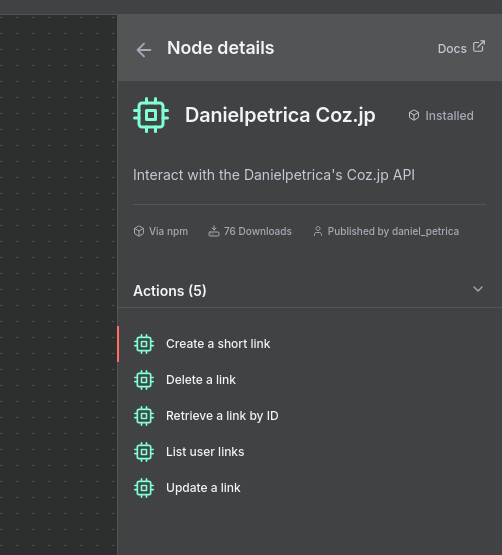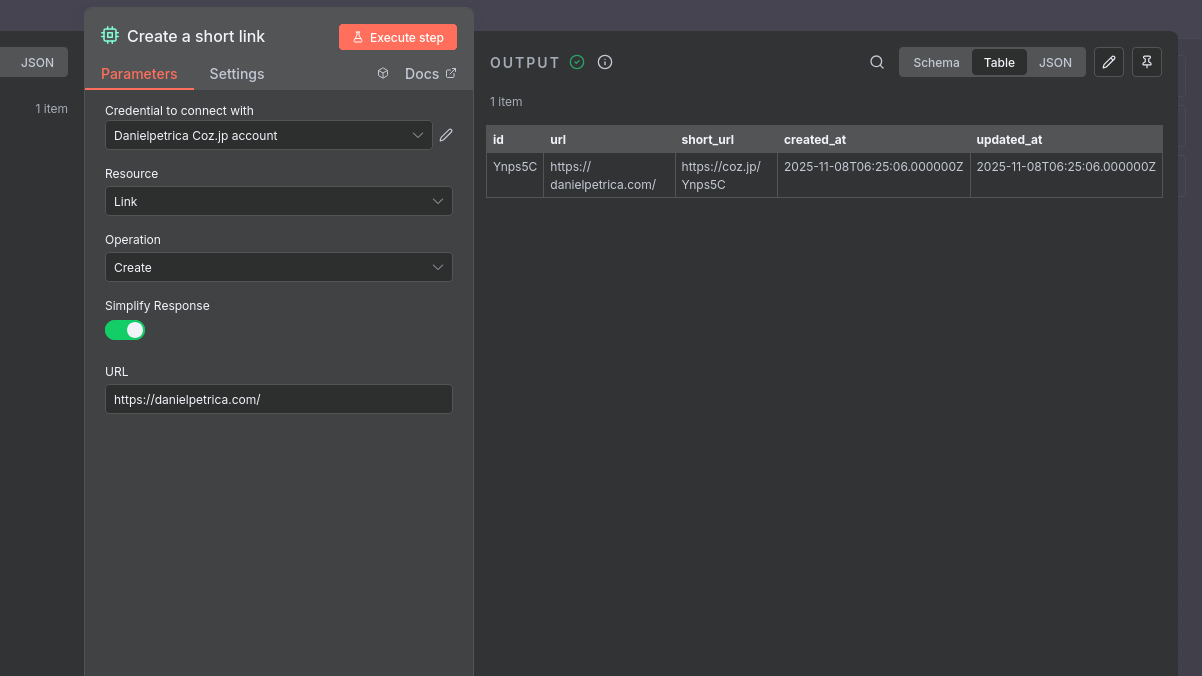Integrating Coz.jp with Your Workflows: A Guide to the n8n Node
Extracto
Coz.jp API support is now in beta! To make integration easy, I've also built an n8n node. This article is a step-by-step guide on how to use it. I'll show you how to get your API token, install the community node in n8n, and configure your credentials to start automating your links.
Contenido
Coz.jp API support is now in beta! To make integration easy, I've also built an n8n node. This article is a step-by-step guide on how to use it. I'll show you how to get your API token, install the community node in n8n, and configure your credentials to start automating your links.
Hello everyone,
If you've been following my journey with Coz.jp, you know I'm passionate about building efficient tools. As I mentioned in my previous article, while I loved the architecture of Coz.jp (you can read more about that here: Introducing Beta API Support for Coz.jp (Plus n8n & Laravel Integrations)), I realized it needed something more to truly shine: seamless integration with other tools.
This is why I developed the API and in this article we will explore how to install the N8n Node and use it.
The Coz.jp API is designed to be simple and focused, offering all the core actions you need for automation: creating, reading, listing, editing, and deleting your links. It uses a bearer token for authentication, which you can easily generate from the new Advanced Profile Feature section in your account. You can find the API documentation at https://coz.jp/docs/api. (Please note: during the beta, this documentation is available only to actively subscribed users. It will be public after the official launch.) A JSON schema is also available, which developers will find very helpful for integration.
Step 1: Obtain Your Coz.jp API Token
The first thing you'll need is your personal API token from Coz.jp.
- If you haven't already, ensure you've activated the Pro Plan using your coupon at
https://coz.jp/billing. - Once activated, you can generate and retrieve your API token from your advanced profile section here:
https://coz.jp/en/profile/advancedImportant: This token is crucial for authenticating your n8n workflows. Please save it immediately in a secure place. For security reasons, this token will only be displayed once and will not be visible again.
Step 2: Install the Coz.jp n8n Node
Now that you have your API token, let's get the Coz.jp node installed in your n8n instance.
- Open your n8n instance.
- In the left-hand navigation, go to Settings.
- Select Community Nodes.
- Click the Install button.
- In the search bar, type
@danielpetrica/n8n-nodes-cozjp. - Once found, click to install it. Ensure you are installing version
v1.0.0-0( or a newer version depending on when you install it).
Step 3: Configure and Use the Coz.jp Node in Your Workflow
With the node installed, you can now add it to your n8n workflows and connect it using your API token.
In your n8n workflow editor, click the "Add new node" button or search for a node.
Search for "coz.jp".

Select the Coz.jp node to add it to your workflow.

Within the Coz.jp node's settings, you will need to create a new credential.
Paste the previous obtained token and save it. If it's fine it will tell you the testing of the connection worked fine.

Once the credential is saved, you can select the specific action you want the node to perform, such as "Create Link". Configure the other fields as needed for your task.

Below is an example output of creating a new link, you can use the short_url property how you see fit to automate your business.

You are now ready to automate your Coz.jp links directly from n8n!
Next Steps
This is just the beginning for Coz.jp integrations. I'm actively working on new features and improvements for both the n8n node and the Laravel plugin. Each of these integrations deserves its own detailed exploration, so expect more in-depth articles coming soon.
I encourage you to subscribe to my blog to receive updates on these plugins and more behind-the-scenes insights into Coz.jp.
In the meantime, give Coz.jp a try, explore its new API capabilities, and let me know what you think!
Fuente: Daniel Petrica
